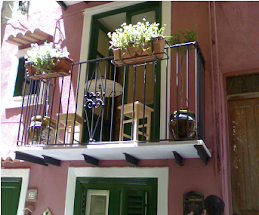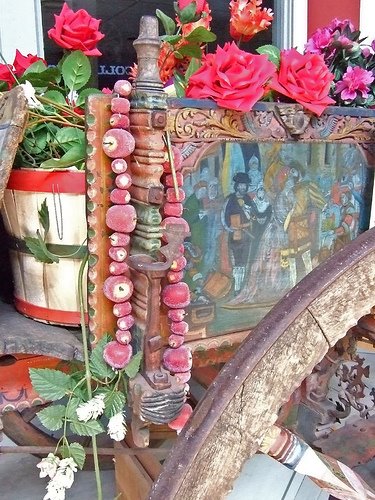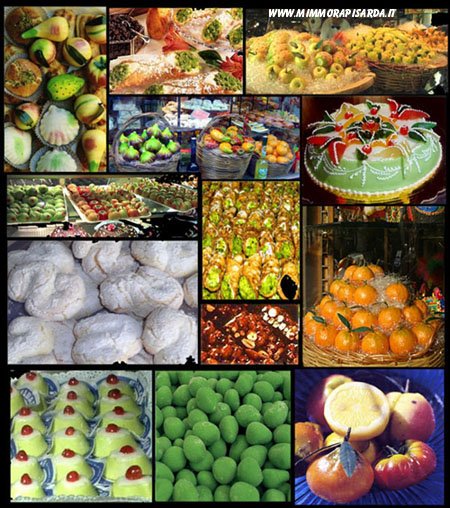
Farsumagru or Falso Magro (literally Fake-Lean) is perhaps the most celebrated Sicilian meat dish.
It translates roughly as nonlenten, because it contains an amazing wealth of ingredients, including meats.
Farsumagru is another typical Sicilian recipe that places its roots around the 1800's, where the French chefs Monsú (from French word Monsieurs) treated their masters with their special "Viande farcie de maigre" - stuffed lean beef roll.
In Sicily, meat has never been verypopular. Perhaps because of the abundance of fish or, on the other hand, for the high prices of bovine meat itself.
In fact, Sicilians were mainly using the cattle for milk and the only available beef came from old or injured bovines whose meat was very hard, chewy and barely edible.
When the Monsú arrived in Sicily and discovered the almost complete lack of quality beef, they needed to come up with something creative to replace their "Viande de false maigre" and decided to embellish the local hard meat by stuffing it with everything "non-lean", such as salami, boiled eggs, ham and cheese.
Just like for "
sarde a beccafico" Sicilians imitated the rich and nobles, but being unable to understand French, they soon renamed that fusion French-Sicilian dish as Falso Magro: A truly original "Fake-Lean".
A rectangular slice of veal weighing 1 3/4-2 pounds (7-800 g), with no holes!
1/2 pound (200 g) prosciutto or mortadella
1/2 pound fresh mild sausage, or the soft salami of Chiaramonte Gulfi
4 hard boiled eggs
4 ounces (100 g) cured lard (a strip the length of the slice of meat)
3 ounces (75 g) ground beef
A fresh spring onion
A beaten egg
A clove of garlic
4 ounces (100 g) sharp caciocavallo or provolone, diced
2 1/2 ounces (60 g) grated pecorino col pepe (similar to Romano, but with peppercorns)
A small bunch parsley
1/4 pound (100 g) freshly shelled peas, blanched in salted water
Tomato sauce
A walnut sized chunk of rendered lard
A sprinkle of well aged red wine
Olive oil
Salt & pepper
Begin by pounding the meat with the flat of a knife, being careful to keep the slab rectangular in shape, and not puncturing it. Next, lay the slices of prosciutto or mortadella over the meat. Trim the tips off the hard boiled eggs to reveal the yolks, and lay them lengthwise down the middle of the piece of meat.
Trim the rind from the lard if need be, put it around the eggs, then sprinkle the diced cheese and parsley sprigs over everything, along with the garlic, minced, and the spring onion.
To complete the filling combine the ground meat, grated cheese, peas, and, if you want, some fresh sausage. Spread the mixture over the other ingredients in the filling, and roll the meat up around it. Tie the roll with string lengthwise and width wise and down, to produces a "salame."
Put the farsumagru in a large pan and brown it either in the fat from cooking sausages, or a mix of lard and oil. At this point the farsumagru is ready to take its place in a festive ragù. Or, if it is to reign in glory by itself at the table, sprinkle it with red wine and continue cooking until the wine has evaporated. Then add some tomato sauce, diluted in water, and simmer the roll for about an hour, covered. When it comes time to serve it transfer it to a platter and remove the string, but wait till you get to the table to slice it into half-inch slices. The beauty of the thing, if it's done right, is the way the brilliant yellow of the yolk is surrounded by the whites, in which are in turn surrounded by the milky lard, with the green of the peas and parsley in the brilliant white of the cheese.
This is the farsumagru, the undisputed King of Sicilian meat dishes.
Serve it with its sauce, and with a fine red wine, along the lines of a Nero D'Avola.










